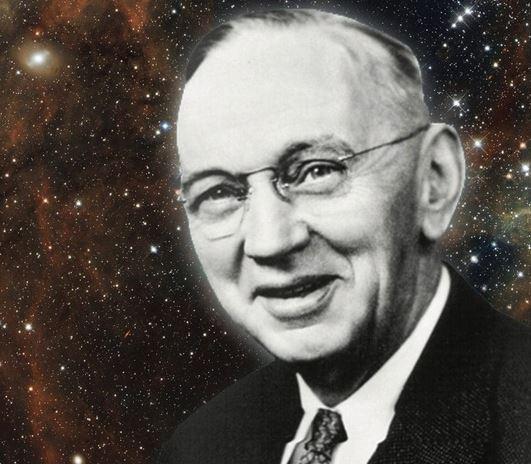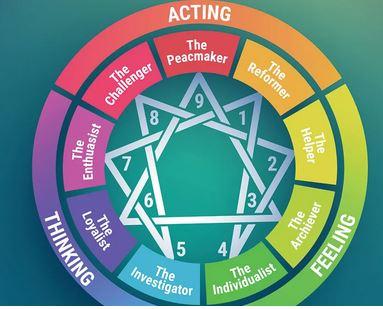Beyond Life: The Profound Lessons of Near-Death Experiences
Near-death experiences (NDEs) have long fascinated humanity, offering a glimpse into the mysteries of consciousness and the possibility of an afterlife. These profound events, often characterized by feelings of peace and joy, have sparked intense curiosity about what lies beyond our mortal existence.

Individuals who have undergone NDEs often report transformative experiences that reshape their understanding of life and death. By exploring these experiences, we can gain valuable insights into the human experience and the nature of existence.
Key Takeaways
- NDEs offer a unique perspective on consciousness and the afterlife.
- These experiences can profoundly impact an individual's understanding of life.
- Research into NDEs can provide insights into the human experience.
- NDEs often involve feelings of peace, joy, and a sense of detachment from the physical world.
- The study of NDEs continues to fascinate and inspire new areas of research.
The Phenomenon of Near-Death Experiences
Near-death experiences (NDEs) have long fascinated people worldwide, sparking intense curiosity about the nature of consciousness and what lies beyond life. These experiences, often reported by individuals who have come close to death or have been clinically dead but then revived, offer profound insights into the human experience.
Defining Near-Death Experiences
A near-death experience is typically characterized by a set of common features, including feelings of peace, joy, and a sense of detachment from the physical body. The definition of NDE encompasses a range of sensations and perceptions, often described as deeply meaningful and transformative.
Common Elements and Patterns
While NDEs can vary significantly from one person to another, certain elements and patterns are commonly reported. These include:
- Feelings of being out of the body
- Experiencing a tunnel or dark passageway
- Encountering a bright light or a divine presence
- Meeting deceased loved ones or spiritual beings
Out-of-Body Experiences
One of the most commonly reported aspects of NDEs is the out-of-body experience (OBE), where individuals feel as though they are floating above their physical bodies, observing their surroundings from a non-corporeal perspective. This sensation can be both disorienting and liberating.
Heightened Awareness and Perception
Many people who have had NDEs report a heightened sense of awareness and perception during the experience. This can include a sense of clarity and understanding that is not typically experienced in everyday life. Such heightened awareness can have a profound impact on an individual's perspective and worldview.
The Science Behind NDEs
Understanding the science behind near-death experiences requires a multifaceted approach, incorporating insights from neurology, physiology, and psychology. This complex phenomenon has sparked intense debate and research within the scientific community.
One of the primary areas of focus is neurological explanations for NDEs. Researchers have proposed several theories to explain the experiences reported by individuals who have come close to death.
Neurological Explanations
Two prominent theories under the neurological explanations are oxygen deprivation theories and brain chemistry changes.
Oxygen Deprivation Theories
Some scientists suggest that the lack of oxygen to the brain, or hypoxia, could trigger the experiences associated with NDEs. This theory posits that the brain's response to oxygen deprivation might lead to the characteristic features of NDEs, such as the tunnel vision effect.
Brain Chemistry Changes
Another theory focuses on the changes in brain chemistry during near-death states. The release of certain neurotransmitters, such as endorphins and dopamine, could potentially induce the feelings of euphoria and peace often reported in NDEs.
Physiological Responses to Near-Death
The body's physiological response to near-death situations is another critical area of study. This includes examining the effects of stress, fear, and the body's 'fight or flight' response on the experiences reported during NDEs.
Research Methodologies and Limitations
Research into NDEs is challenging due to the unpredictable nature of these events. Methodologies range from retrospective studies of individuals who have experienced NDEs to experimental studies attempting to replicate NDE conditions in a controlled environment. Despite these efforts, there are significant limitations, including reliance on self-reported experiences and the difficulty of studying a phenomenon that is, by definition, rare and unpredictable.
As Dr. Sam Parnia, a leading researcher in the field, notes,
"The study of near-death experiences is a complex task that requires a multidisciplinary approach, combining insights from medicine, psychology, and philosophy."
Historical and Cross-Cultural Perspectives
Historical records and cultural narratives reveal that NDEs have been a significant aspect of human experience throughout history. Various cultures have documented experiences that resemble modern-day NDEs, often interpreting them through their unique cultural and spiritual lenses.
Ancient Accounts of NDEs
Ancient texts contain descriptions that parallel contemporary NDE accounts. For instance, the Egyptian Book of the Dead and the Tibetan Book of the Dead provide insights into the afterlife and the journey of the soul, echoing elements commonly reported in NDEs.
Egyptian Book of the Dead
The Egyptian text describes the deceased navigating through the underworld, facing various challenges and judgments, a theme that resonates with the life review aspect of some NDEs.
Tibetan Book of the Dead
This sacred text guides the deceased through the intermediate state between life and death, detailing experiences that mirror the tunnel vision and encounters with beings of light reported in many NDEs.
Cultural Variations in NDE Reports
| Culture | NDE Characteristics |
|---|---|
| Western | Often involve a tunnel, light, and deceased loved ones |
| Eastern | May include encounters with karma and rebirth |
| Indigenous | Frequently involve ancestral spirits and nature elements |
Cultural backgrounds significantly influence the interpretation and narrative of NDEs, as seen in the diverse reports across different societies.
Common Elements of the NDE Journey
Near-death experiences (NDEs) often involve a series of common elements that have been reported by individuals from diverse backgrounds. These shared experiences provide insight into the nature of NDEs and their impact on those who undergo them.
The Tunnel Experience
One of the most frequently reported elements of an NDE is the sensation of moving through a tunnel. This experience is often described as a feeling of being drawn through a dark, enclosed space towards a light source.
Encountering Light
Encountering a brilliant, warm light is another common aspect of NDEs. This light is often associated with feelings of peace, comfort, and love.
Meeting Deceased Loved Ones
Many individuals report meeting deceased family members or friends during their NDE. These encounters are often described as joyful reunions.
Life Reviews
Life reviews are a significant component of many NDEs, involving a retrospective examination of one's life. This can include:
- Witnessing Past Actions: Observing past events and understanding their impact on oneself and others.
- Experiencing Others' Emotions: Feeling the emotions of those affected by one's actions, fostering empathy and understanding.
These elements, among others, contribute to the profound impact of NDEs on individuals, often leading to significant personal transformations.
Near-death experiences: What the view beyond life teaches us
Near-death experiences (NDEs) offer profound insights into the nature of consciousness and human existence. These experiences, while varied, share common elements that provide a unique perspective on the human condition.
Insights About Consciousness
NDEs often reveal that consciousness is not solely dependent on the physical body. Many individuals report experiencing a sense of separation from their bodies, yet remaining conscious and aware. This challenges our understanding of the relationship between the brain and consciousness.
Lessons About Human Connection
NDEs frequently involve encounters with deceased loved ones, highlighting the significance of human connections. These experiences underscore the importance of building and maintaining meaningful relationships during our lives.
Perspectives on Life's Purpose
Individuals who have had NDEs often return with a renewed sense of purpose. They frequently report a shift in priorities, focusing more on personal growth, helping others, and cultivating love and compassion.
Finding Meaning in Suffering
NDEs can provide insight into the role of suffering in our lives. Many who have experienced NDEs report that suffering can be a catalyst for personal growth and a deeper understanding of oneself and others.
The Importance of Love and Compassion
Love and compassion are recurring themes in NDE accounts. These experiences emphasize the importance of cultivating these qualities in our daily lives, fostering a more empathetic and connected world.
| Key Insights from NDEs | Description | Impact on Life |
|---|---|---|
| Consciousness Beyond the Body | Experiencing consciousness separate from the physical body | Changes perspective on life and death |
| Human Connection | Encountering deceased loved ones | Emphasizes the importance of relationships |
| Life's Purpose | Renewed sense of purpose after NDE | Shifts priorities towards personal growth and helping others |
Transformative Effects on Survivors
Survivors of near-death experiences often undergo significant personal transformations that can affect various aspects of their lives. These transformations can be profound, leading to a renewed sense of purpose and understanding of life. The changes reported by NDE survivors are multifaceted, encompassing psychological, spiritual, and lifestyle adjustments.
Psychological Changes
NDE survivors frequently report reduced fear of death, having experienced a glimpse of what lies beyond life. This newfound understanding can lead to a more peaceful and less anxious approach to mortality.
Reduced Fear of Death
The experience of being in a near-death state and returning can profoundly impact one's perception of death, making it less intimidating. Survivors often report feeling more at peace with the concept of dying.
Increased Empathy
Another common psychological change is increased empathy towards others. Survivors often report feeling a deeper connection to those around them, fostering stronger, more meaningful relationships.
Spiritual Awakenings
Many NDE survivors experience spiritual awakenings, discovering or deepening their spiritual beliefs and practices. This can lead to a greater sense of connection to a higher power or the universe.
Life Priority Shifts
Survivors often undergo significant life priority shifts, reevaluating what is truly important to them. This can manifest in various ways, including changes in career, relationships, and personal goals.
Career and Relationship Changes
NDE survivors may choose to change their careers or approach their work with a new perspective, often seeking more meaningful or altruistic paths. Relationships may also be reexamined, with a focus on nurturing those that are truly significant.
New Life Missions
Some survivors adopt new life missions, driven by their experiences to make a positive impact on the world. This could involve volunteering, advocacy, or other forms of service.

The transformative effects of NDEs on survivors underscore the profound impact these experiences can have on an individual's life. By understanding these changes, we can gain insights into the human capacity for resilience and transformation.
The Controversy: Skepticism vs. Belief
As NDEs continue to fascinate and perplex, the divide between skepticism and belief remains a contentious issue. The phenomenon is met with a range of reactions, from scientific skepticism to deep personal belief.
Scientific Skepticism
Skeptics argue that NDEs can be explained by neurological and physiological factors. They suggest that the brain's response to trauma or stress can lead to the experiences reported by NDE survivors.
Religious Interpretations
On the other hand, many people interpret NDEs through a spiritual or religious lens. They see these experiences as evidence of an afterlife or a connection to a higher power.
Finding Middle Ground
It's possible to find a middle ground between skepticism and belief. This involves respecting experiential evidence while maintaining scientific rigor.
Respecting Experiential Evidence
Acknowledging the personal experiences of NDE survivors is crucial. Their stories provide valuable insights into the phenomenon.
Maintaining Scientific Rigor
At the same time, it's essential to approach NDEs with a critical and analytical mindset. This ensures that the study of NDEs remains grounded in empirical evidence.
Notable NDE Accounts and Their Impacts
Notable NDE accounts have profoundly impacted our understanding of consciousness and the human experience. These stories, often filled with elements of peace, joy, and profound insight, have captivated the public imagination and inspired further research into the phenomenon.
Physicians Who Experienced NDEs
Some of the most compelling NDE accounts come from medical professionals, whose experiences challenge the conventional understanding of consciousness and the mind-body relationship.
Dr. Eben Alexander's Journey
Dr. Eben Alexander, a neurosurgeon, experienced a profound NDE during a coma induced by bacterial meningitis. His account, detailed in his book Proof of Heaven, describes a journey through a realm that felt more real than his physical reality.
Dr. Mary Neal's Experience
Dr. Mary Neal, an orthopedic surgeon, had an NDE while kayaking. She recounts experiencing a deep sense of peace and joy, and encountering deceased loved ones.
Ordinary People with Extraordinary Stories
Beyond medical professionals, numerous ordinary individuals have shared extraordinary NDE stories that highlight the transformative power of these experiences.
Anita Moorjani's Healing
Anita Moorjani's NDE followed a diagnosis of terminal cancer. Her experience was marked by a deep sense of love and acceptance, and she subsequently experienced a rapid recovery.
Howard Storm's Transformation
Howard Storm's NDE involved a journey through realms of darkness and light, ultimately leading to a profound transformation in his life and perspective.
Modern Research and Scientific Advances
Modern research has shed new light on the phenomenon of near-death experiences, offering fresh insights into this complex and intriguing area of study. Recent studies have employed innovative methodologies to better understand the nature of NDEs.
AWARE Studies and Findings
The AWARE (AWAreness during REsuscitation) study is a landmark research project that aimed to investigate consciousness during cardiac arrest. Led by Dr. Sam Parnia, this study involved multiple centers and collected data from numerous patients who had experienced cardiac arrest. The findings from the AWARE study have provided valuable insights into the occurrence of NDEs during clinical death.

Neuroimaging During Near-Death States
Advances in neuroimaging techniques have enabled researchers to study the brain's activity during near-death states. Studies using modalities like functional magnetic resonance imaging (fMRI) and electroencephalography (EEG) have shed light on the neural correlates of NDEs. These findings help in understanding the physiological basis of the experiences reported by survivors.
Quantum Physics and Consciousness Research
The intersection of quantum physics and consciousness research is an emerging area of investigation that may hold the key to understanding NDEs. Theories such as non-local consciousness and information field models are being explored to explain the phenomena observed during NDEs.
Non-Local Consciousness Theories
Non-local consciousness theories propose that consciousness is not confined to the brain but is a fundamental aspect of the universe, akin to space and time. This perspective suggests that consciousness can exist independently of the physical body, potentially explaining the experiences reported during NDEs.
Information Field Models
Information field models, inspired by quantum field theory, suggest that the universe is permeated by fields that could store and process information. Some researchers believe that NDEs may involve accessing such fields, providing a framework for understanding the rich, often profound experiences reported by survivors.
NDEs and the Evolution of Death Perspectives
NDEs have revolutionized our understanding of mortality, shifting perspectives on death. This transformation is evident in various aspects of society, particularly in medical approaches and end-of-life care.
Changing Medical Approaches to Death
The medical community's view on death has become more holistic, thanks to insights from NDEs. There's a growing emphasis on providing compassionate care during the dying process.
Impact on Hospice and Palliative Care
NDEs have positively influenced hospice and palliative care, encouraging a more patient-centered approach. This shift focuses on the comfort and dignity of the patient.
Public Attitudes Toward Mortality
The public's perception of death is changing, with NDEs contributing to reduced death anxiety and increased interest in afterlife possibilities.
Reduced Death Anxiety
Stories of NDEs often bring comfort to those facing death, reducing fear and anxiety about the dying process.
Increased Interest in Afterlife Possibilities
NDEs have sparked curiosity about what lies beyond life, encouraging a more open discussion about the afterlife.
As we continue to learn from NDEs, our understanding of death and dying evolves, fostering a more compassionate and enlightened approach to end-of-life care.
Practical Applications of NDE Insights
By examining the elements of Near-Death Experiences, we can uncover practical ways to enhance end-of-life care and foster personal development. The transformative power of NDEs lies not only in understanding the experience itself but also in applying its insights to improve our lives and the lives of those around us.
End-of-Life Care Improvements
NDE insights can significantly enhance end-of-life care by promoting a more compassionate and holistic approach. This includes focusing on the emotional and spiritual needs of patients, alongside their physical care.
Grief Counseling Approaches
Grief counseling can also benefit from NDE insights. Understanding the common elements of NDEs, such as encounters with deceased loved ones, can help counselors provide more empathetic support to the bereaved.
Living with Greater Purpose
NDEs often prompt individuals to reevaluate their life priorities and live with greater purpose. This involves cultivating meaningful relationships, pursuing personal growth, and contributing to the well-being of others.
Implementing NDE Wisdom in Daily Life
Implementing the wisdom gained from NDEs into daily life involves adopting a more mindful and compassionate approach to living. This can include practices such as meditation, gratitude, and service to others.
Building Compassionate Communities
By sharing NDE insights, we can build more compassionate communities that support individuals through life's challenges. This includes creating environments where people feel understood and cared for.
| Practical Application | Description | Benefit |
|---|---|---|
| End-of-Life Care | Holistic approach including emotional and spiritual support | More compassionate care for patients |
| Grief Counseling | Empathetic support based on NDE insights | Better support for the bereaved |
| Living with Purpose | Reevaluation of life priorities | More fulfilling lives |
Conclusion: The Continuing Journey Beyond Life
Near-Death Experiences have long fascinated humanity, offering a glimpse into the unknown. As we have explored, NDEs are complex phenomena characterized by a range of sensations and encounters. The journey beyond life, as described by those who have experienced NDEs, challenges our understanding of consciousness, death, and the human experience.
Research into NDEs continues to evolve, shedding light on the neurological, physiological, and psychological aspects of these events. The insights gained from NDEs have profound implications for how we approach end-of-life care, grief counseling, and our broader understanding of life's purpose. As we reflect on the lessons of NDEs, we are encouraged to reevaluate our priorities and appreciate the preciousness of life.
The journey beyond life, as revealed through NDEs, invites us to explore the depths of human consciousness and our connection to something greater than ourselves. As we continue to study and learn from these experiences, we may uncover even more profound insights into the nature of existence and our place within it, ultimately enriching our journey beyond life.







